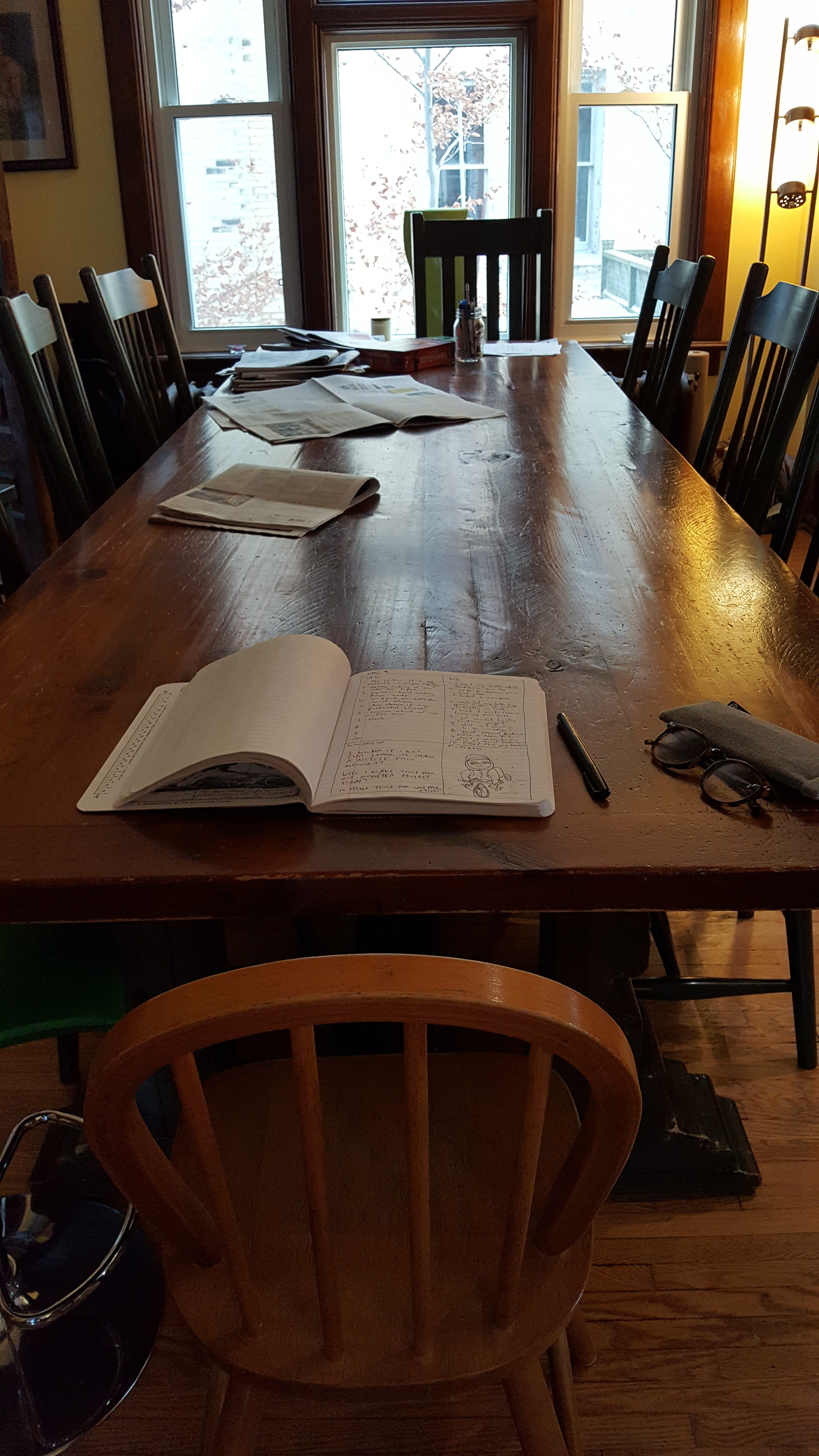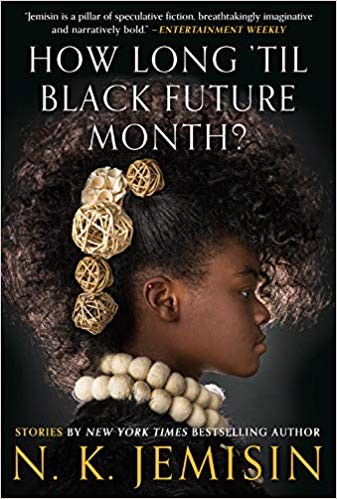“To never be seen. To be unseeable, to not occupy physical space, to be present only as absence. To nonexist. That was the fantasy, although I didn’t articulate it to myself in those terms then.”
Meaghan Rondeau, “Half-Thing”
TNQ’s 2018 Edna Staebler Personal Essay Contest winner is BC writer Meaghan Rondeau, for her remarkable essay, “Half-Thing.”
You can read the essay in our fall contest issue, TNQ 148.
TNQ’s annual Personal Essay contest has no word count and all submissions are considered for publication. The 2018 adjudicators were: Tasneem Jamal, Pamela Mulloy, Emily Urquhart, Peter Woolstencroft, and yours truly.
—Susan Scott
TNQ Nonfiction Editor
Meaghan, in our first email exchange, you assumed we’d made a mistake—you couldn’t possibly have won the contest. One prof had told you “Half-Thing” wasn’t actually a personal essay. It worked for us, though; judges loved what nonfiction guru Phillip Lopate might call the “highly intentional literary style,” and curiosity about the backstory ran high. What’s the genesis of the piece? Why unspool your thoughts in an essay?
I still believe this is a mistake, but it’s too late for you to back out of it now. I gave you opportunities and you doubled down on your original e-mail every time, so here we are.
I also agree with that prof (hi Andreas) that my submission is not a personal essay. It for sure nails the “personal” part super hard, but I wouldn’t call it an essay. My kickass thesis supervisor (hi Rhea) called it a meditation, which feels more accurate. Really though I don’t care what it is or what anyone wants to call it. Categorizing writing is arbitrary and limiting; it has everything to do with authority and therefore nothing to do with creativity. Genre to me is something to be mistrusted and messed with. The label “half-thing” applies as much to my work as to its author.
As far as the essay’s opening sentence goes—well, it’s a fact that puts, uhh, “the speaker” [glances around nervously] in an unusual position. For me as a person, it’s an increasingly uncomfortable and alienating position to be in. For me as a writer, though, it’s an advantage, in the sense that communicating from unusual positions is a writer’s job.
The actual decision to open a document and start writing the piece(s) was boringly circumstantial: there was a personal essay assignment in my nonfiction class, so I thought, here’s a good low-stakes opportunity to see if, and how, the view from this unusual position can be translated into words, and to see how a room full of my peers reacts to it, and to see how it feels to be in that room. (It was great, I felt like Walder Frey at the Red Wedding.) At the time, even though I was allegedly in the middle of writing a poetry thesis, poetry and I weren’t getting along at all (we fight constantly, and I thought this time we might be breaking up for realsies), so doing it as poems never crossed my mind. One of the things I argue about with poetry is the cleverness and artifice it demands. I’m super into those things, arguably too into them, and I think they can come at the expense of real emotional risk, or real honesty. Like that Keats sonnet with the line “Beauty is truth, truth beauty, that is all.” You can sit there and be like, Ah, how profound; Ooh, what a delicious chiasmus. (ßOne of my Greek profs used that phrase in class in like 2003 and I’m still obsessed with it. Hi Dr. Cropp.) It’s true, that is a beautiful line. Language can and regularly does achieve beauty. But like, “beauty is truth”? Come on. I’m staunchly pro- both of them, but it’s self-serving melodramatic nonsense to claim that they’re the same thing. In the last ten years or so, for various reasons (stay tuned for next year’s essay), I’ve come to value truth more, and I think that’s why poetry and I are having a much harder time getting along than we used to. Truth doesn’t give a shit what it looks like or sounds like or makes you feel like. The truth is, Keats died of tuberculosis in his twenties. Also, that delicious chiasmus doesn’t scan properly. Not only do I reject it, the poem itself rejects it.
What am I longwindedly saying? That I didn’t want this piece of writing to offer me, or the reader, anywhere to hide.
“Half-Thing” begins with a question—“How does one begin an essay on almost-middle-aged virginity?”—then unfolds in segments that explore interlinking chambers of experience, reflection, and doubt. You then question yourself constantly; you’re relentless, really. That’s part of what attracted us—who is this person, we wondered. Talk about your process: how did the essay come together? Was it built on earlier drafts? Did you map it out? Did you have to talk yourself off the ledge while writing?
Ultimately I guess it began with the book-length nonfiction manuscript that I pounded out in 2007-08 after my life fell apart and I left my PhD program. One of the reasons I left was that I wanted to give writing a real shot and had realized that would never happen if I was constantly trying to stay afloat in academia (god I hate that word). In my mind I’ve always been a writer—I’m not a confident person in general but that’s always felt like an obvious fact to me. Is that arrogant? [Shrugs.] But in reality, out where it matters, I’d never written anything, aside from academic essays and the occasional funny poem. So I cranked out this manuscript. I was in a scary-horrible place emotionally—but also, it turned out, a place of ecstatically productive creativity. I ended up deciding that manuscript should never be published, but I’ve been using it for parts for years since then. “Half-Thing” is full of ideas, scenes, and structural and voice elements that first came to life there.
Once I started writing it, it came together fairly quickly. It pretty much had to: I left it to the last minute, classic Meaghan, so I had like a weekend to get a draft done in time for the class submission deadline. The version I sent to TNQ is very similar to the original. Same structure, same beginning and ending, same concepts.
I did spend a lot of time shifting the segments around. I didn’t map it out physically, but when I write something like this there’s a sort of bulletin board in my mind of the themes involved and the connections between them, kind of like what police on TV set up when they’re trying to solve a case. My thinking tends to be more theme-oriented than time-oriented. I don’t think in a straight line, and I have a hard time sticking to one topic. There’s a Simpsons episode where people are lined up outside a theatre and one of the movie titles on the marquee is Too Many Premises. That’s my style of writing, and thinking. One of the challenges when I write is that as much as I want fragments and gaps and a broad range of ideas, I also want it to be possible for a reader to connect, and connect with, the ideas (although not necessarily—in fact, necessarily not—in the same way I do). I’m always looking for a patch of semi-comfortable middle ground between hand-holding and abandonment.
I almost always write from the ledge. That’s the best place to be, logistically. You can see everything at once from up there. But it’s also emotionally unpleasant. So it’s more like I have to talk myself onto the ledge in order to start writing.
Clearly, you love language and it loves you. You’re an accomplished translator, a graduate of UBC’s MFA program—tell us how you came to writing, and what, if anything, attracts you to creative nonfiction (CNF).
I graduated from UBC in February. I’ve officially mastered the fine art of creative writing! Now it’s just a matter of kicking back with my cats and a gigantic drink and waiting for the money and book contract offers to roll in.
I’m an accomplished translator? That’s great news! Please inform the agents and publishers in your circle. I haven’t done that much translation, really, and only one of my translations has ever been accepted for publication. But yes, I love doing it, and I’m going to do more of it.
Writing came to me. For a long time I was too fucked up or busy with school or both to do anything about it, but I always knew it was there, waiting for me to get my shit together. When I was younger I thought I’d write fiction, but nope. I don’t have that kind of imagination. Huge props to the people who do, because they’re keeping me entertained: fiction is what I read, most of the time. CNF isn’t something I’ve ever had a great love for, and I’m still not sure that I do, but I’ve been stuck with it implicitly all my life, and explicitly since mid-2006. I don’t want to get into it here—see above re: too many premises and next year’s essay—but I learned something important that had been scrupulously hidden from me since I was very young. That revelation collapsed my identity, which was terrible and terrifying at the time and for many years afterward, but has ultimately allowed me to rebuild myself into something stronger and realer. And this story, as far as I’m concerned, must be told, insists on it, and can only be told as nonfiction. That’s the only way to stand up to the fiction I was made to exist in pre-2006. It nearly killed me, but it failed, and now I’m killing it.
Are you a fan of particular essayists, fiction writers, or poets? Any works you turned to for guidance when composing “Half-Thing”? Anything or anyone you’d like to endorse?
I’m a fan of bazillions of writers…. Essay-wise, I can’t not mention David Foster Wallace. I know he was a dick to some people and I’m not endorsing that, but I am wholeheartedly endorsing his essay collections (and everything else he wrote). Long-form-CNF-wise, Temple Grandin’s book Animals in Translation is fascinating in itself as well as being a helpful example of a weird person kicking ass. Yuval Noah Harari’s Sapiens is…I don’t know how to put it…a relief? Yeah, let’s go with that. A good antidote to the obsessive categorization of humans that’s all the rage these days everywhere you look on the political landscape. Maggie Nelson, through The Argonauts, gave me some permission I hadn’t realized I’d been searching for. Dorothea Lasky’s Black Life, likewise. That’s poetry, but whatever, it reads like nonfiction to me, emotionally. Recently I read The Chronology of Water, Lidia Yuknavitch’s memoir, and I’d already written “Half-Thing” by then but I found it super comforting that here was someone else who seems to be taking the murder suspect board associative approach to writing, plus more importantly she’s just super badass as a human. Not only does she have zero fucks of her own to give, she’s running down fucks that other people have given and smashing them on the ground and doing a dance on the pieces.
Fiction I’ve loved recently: Sum (David Eagleman), The Idiot (Elif Batuman), Human Acts (Han Kang), Home Fire (Kamila Shamsie). I’m currently coming down the home stretch of N.K. Jemisin’s Broken Earth trilogy, and it’s very strange and compelling.
There’s a whole slate of CNF contests these days, which is great for editors and publishers because contests alert us to shifts in writerly preoccupations. Still, submitting can be time-consuming and expensive. You pushed past all that to submit to a personal essay contest—why?
I’m really not that into submitting, in any sense of the word. I send stuff out maybe five times a year. Honestly, I submitted to this contest because it’s one of very few that don’t have a word limit. My essay is over 6000 words, and most lit mags are having none of that, and I wasn’t willing to remove a bunch of its limbs and organs in order to make it more submittable. I definitely didn’t have a target contest or magazine in mind as I wrote it. Publishability is a concept I’m actively uninterested in. Anyway, I sent it to you with no expectations, not believing it was a personal essay, but very much believing in it as a piece of writing, and figuring, hey, maybe along the way someone will read it and like it.
Oh god, I’m a terrible role model. I hope none of my ex-students are reading this. Don’t be like me, kids! Submit your work at every possible opportunity! Real writers aim for twelve thousand rejections a day!
“Half-thing” is now a prize-winner. Does that change your relationship with the piece? I’m interested in the enduring power of a work—how it resonates with readers, yes, but also its impact on the writer. Are you invested in the topic still? Or have you said all you’ve got to say—for now?
My relationship with external validation isn’t what it used to be. In the moment, it felt great—unbelievable, in fact—to learn I’d won this contest. It was a shock to be accepted like that, as a writer and as a person. This prize is a big departure from lit mags’ usual response to my submissions, and a big deal in my writing life. But it doesn’t change how I feel about the essay itself. Before the contest came along, and regardless of its outcome or whether I even submitted to it, this piece of writing already was what it was and is, and I believed in it.
I did have a weirdly emotional reaction to the proof. Even though I’ve spent hours staring at this thing and picking at it, somehow seeing it in a different font and layout, with my name on it, made this realer. By “this” I don’t mean just the fact of my having won the contest, but the fact that this is my life, this is who I am, these things have happened and are happening to me. It’s not just 6000 words of text, it’s not just a contest submission, it’s the real voice of a real person.
I am still invested in “the topic,” in that nothing is resolved in the essay (it ends with a question, as well as beginning with one…) and nothing has been resolved in my life through writing it. But I don’t think I’ll necessarily be writing about it head-on again any time soon. I’m definitely still very much invested in the ideas and concepts I play with while exploring it—time, comedy, translation, dis/connection, un/embodiedness, identity, humanity, integrity. Those are my jams.
Edna Staebler was the pioneering writer from Waterloo region whose generous bequests support two national contests (including this one) as well as two writing residencies. Any special plans for your prize money—is it earmarked for something that will safeguard or contribute to your writing life?
Well, any increase in my income contributes to my writing life…. Regardless of where the money ends up going, I appreciate it, and I’m grateful to you and to the other readers, adjudicators, profs, and classmates who were involved in making this bizarre situation happen.
While I’m here: shoutout to my awesome cool cats, Peter and Larry.
Do I get a song request? This is “Motherlover” by The Lonely Island on CKNQ 104.6 Wridiculous Writer Wradio.

 It’s imaginative space I intend to claim this year. Luxurious, clean, open space for my mind to wander freely. Away from to-do lists, receipts, invoices, budgets, grant applications, course outlines, time tables, school fees, and all of the other things that pull my shoulders up to meet my ears as soon as I step into this office. Maybe someday I’ll Marie Kondo the crap out of this particular space, but meanwhile, that crap needs somewhere to live. I’ve got a different solution.
It’s imaginative space I intend to claim this year. Luxurious, clean, open space for my mind to wander freely. Away from to-do lists, receipts, invoices, budgets, grant applications, course outlines, time tables, school fees, and all of the other things that pull my shoulders up to meet my ears as soon as I step into this office. Maybe someday I’ll Marie Kondo the crap out of this particular space, but meanwhile, that crap needs somewhere to live. I’ve got a different solution. worlds, but as a young queer woman (and later nonbinary person) and aspiring feminist, I quickly grew tired of the racist and sexist hero journeys in popular Eurocentric white male SFF.
worlds, but as a young queer woman (and later nonbinary person) and aspiring feminist, I quickly grew tired of the racist and sexist hero journeys in popular Eurocentric white male SFF.